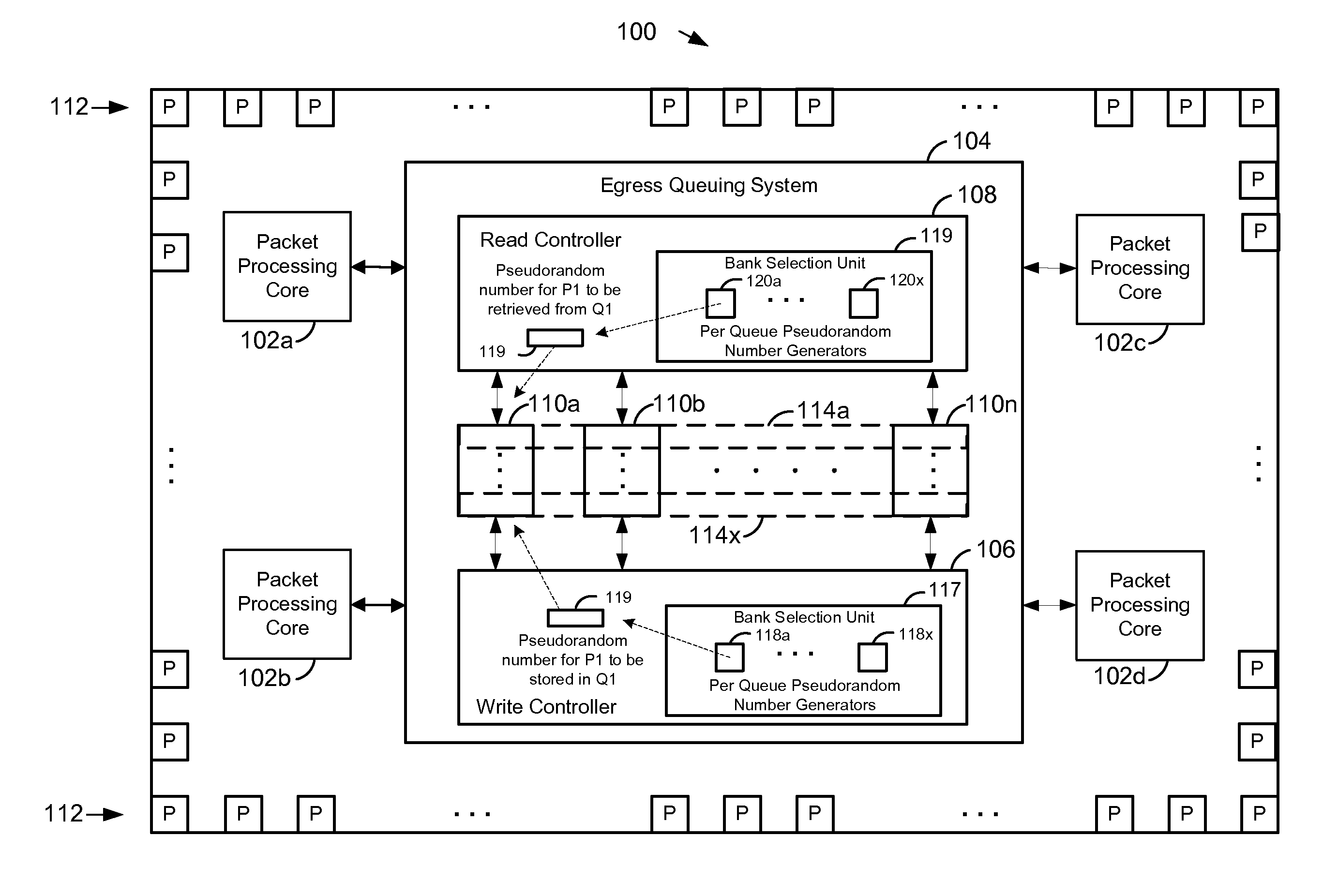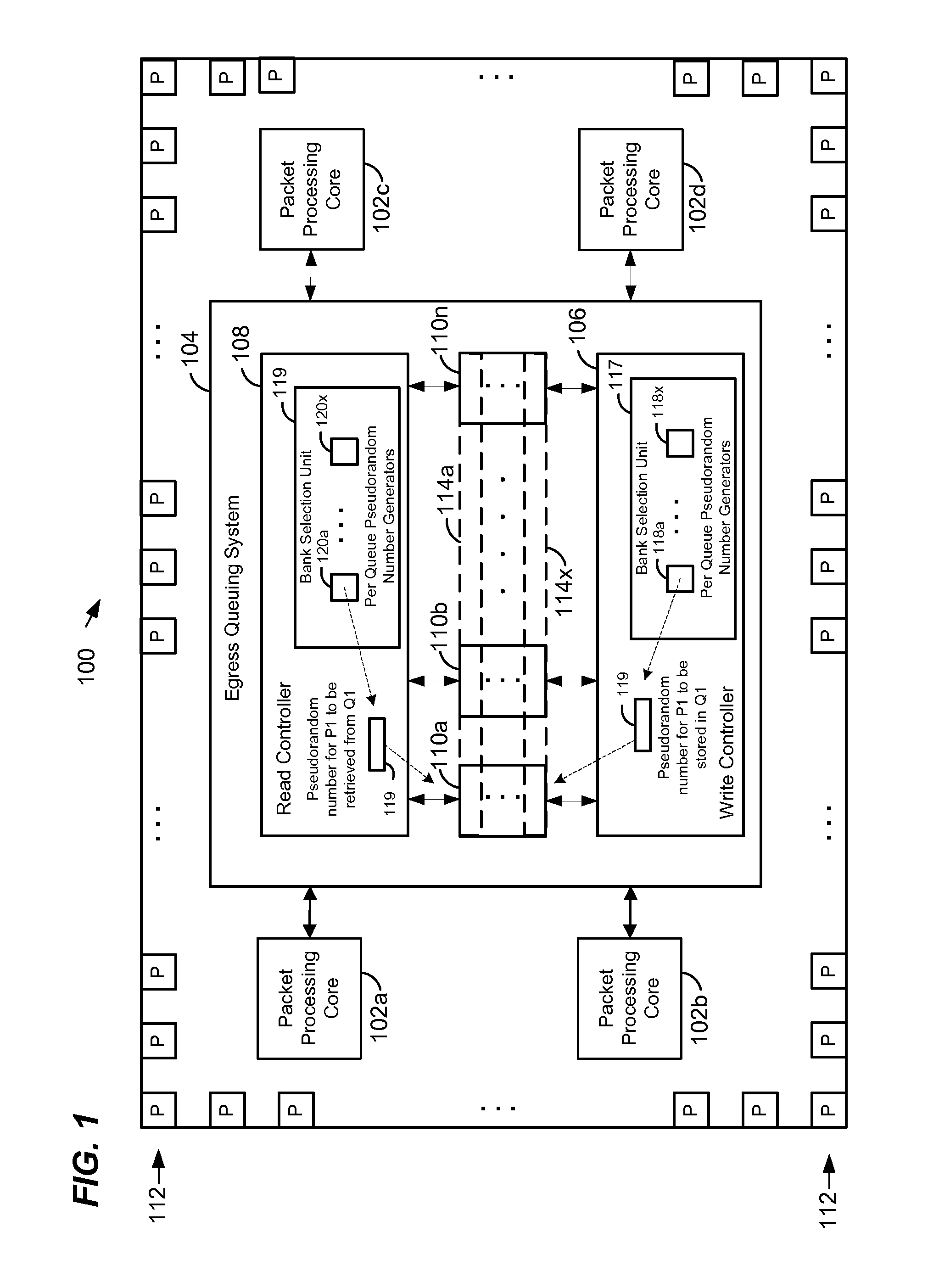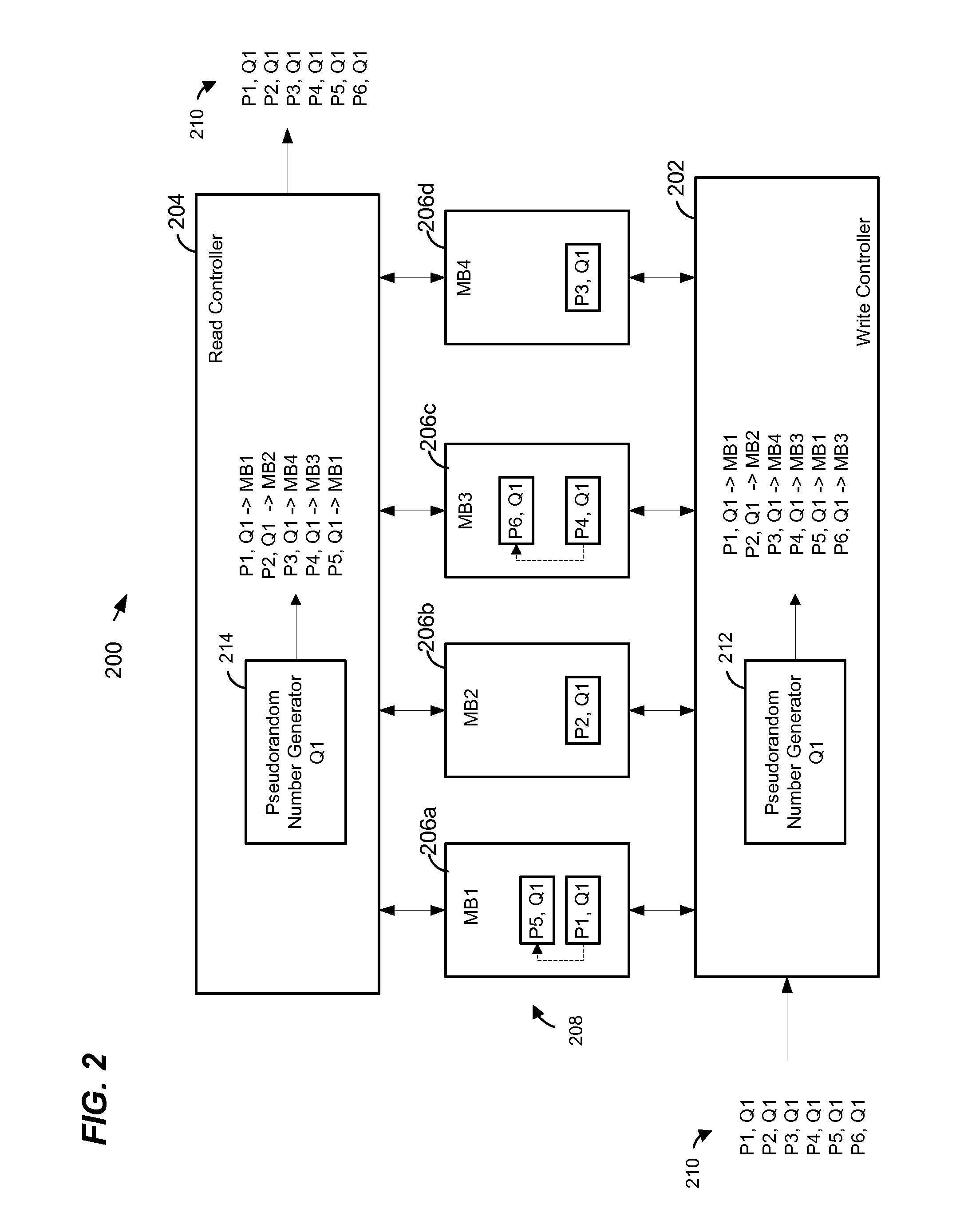Multibank egress queuing system in a network device
a network device and multi-bank technology, applied in data switching networks, memory adressing/allocation/relocation, instruments, etc., can solve the problems of inability to support a large number of egress queues and/or large numbers, and the methods are limited in resp
- Summary
- Abstract
- Description
- Claims
- Application Information
AI Technical Summary
Benefits of technology
Problems solved by technology
Method used
Image
Examples
Embodiment Construction
[0014]FIG. 1 is a block diagram of an example multi-core network device 100, such as a Layer-2 and / or Layer-3 switch, according to an embodiment. The network device 100 includes a plurality of packet processing cores 102 coupled to an egress queuing system 104 shared by the packet processing cores 102. Although four packet processing cores are illustrated in FIG. 1, the network device 100 includes other suitable numbers of packet processing cores 102, and the egress queuing system 104 is shared by the other suitable number of packet processing cores 102, in other embodiments. For example, in an example embodiment in which the packet processing cores 102 are implemented using custom integrated circuits (ICs), such as application specific integrated circuits (ASICs), configured to process packets using multiple packet processing stages arranged in a pipeline architecture, the network device 100 includes 8 or 16 packet processing cores 102. As another example, in example embodiments in...
PUM
 Login to View More
Login to View More Abstract
Description
Claims
Application Information
 Login to View More
Login to View More - R&D
- Intellectual Property
- Life Sciences
- Materials
- Tech Scout
- Unparalleled Data Quality
- Higher Quality Content
- 60% Fewer Hallucinations
Browse by: Latest US Patents, China's latest patents, Technical Efficacy Thesaurus, Application Domain, Technology Topic, Popular Technical Reports.
© 2025 PatSnap. All rights reserved.Legal|Privacy policy|Modern Slavery Act Transparency Statement|Sitemap|About US| Contact US: help@patsnap.com



